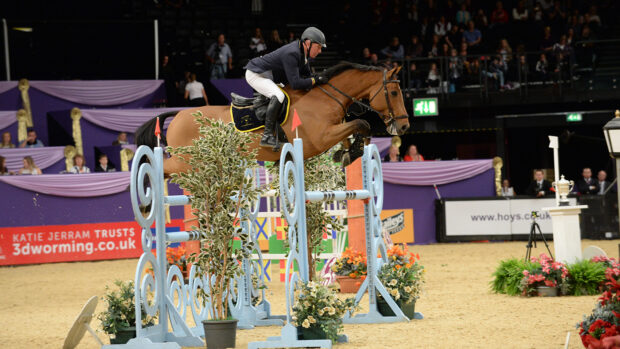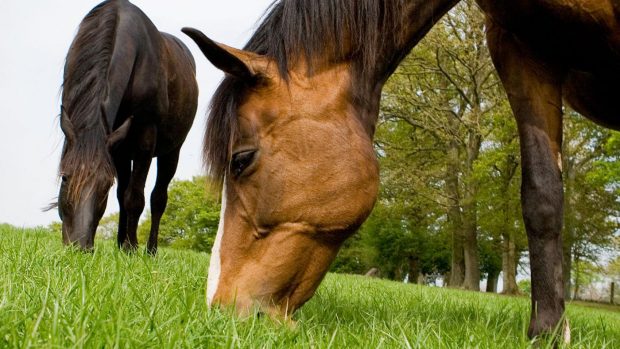Over the course of her horse training career, Kathrin Roida has progressively gained a deep appreciation for the benefits of gymnastic exercises, particularly those that can be taught to the horse from the ground. “In-hand” training has long been used to help develop the dressage horse, conditioning and suppling his body, while at the same time preparing his mind to grasp the movements that may eventually be expected. Roida relies on these techniques when working with young horses, which she prepares for under-saddle training with exercises first learned on the ground.
In this book, fully illustrated with 217 colour photographs, she details her methods, sharing the stories of a number of horses of different ages, breeds, and training backgrounds, and demonstrating the steps to teaching them shoulder-in, travers, renvers, pirouettes, half-pass, piaffe, passage, canter work, the Spanish walk, and much more. Throughout, her conscientious attention to what is best for the horse ensures that not only do the lessons result in a horse that is healthy in body, but also one that is healthy in mind and happy in his work.
Kathrin Roida runs a horse training facility in Fürstenfeldbruck, Germany. She works with horses of all breeds, and has trained with a number of riding and training luminaries, including Anja Beran, Manuel Jorge de Oliveira, Dr. Gerd Heuschmann, Jean- Claude Dysli, Marc de Froissard de Broissia, and Johann Riegler.
In this book extract, Kathrin explains how the early stages of passage can  be taught to a horse:
be taught to a horse:
Passage: How it’s done — a balanced passage done in-hand gives the trainer a feeling of happiness, as the horse works so gracefully.
A correctly executed passage is a powerful, wave-like, upward movement with a moment of suspension. Therefore, you should only introduce the passage once the piaffe is confirmed and the horse has developed the necessary balance. When executed in in lightness, every horse can passage gracefully. You should be able to execute the exercise without force. In-hand, this exercise is a challenge. Under saddle, your weight and leg aids help to frame the horse and keep him straight. Most of the time, passage in-hand is developed along the wall of the arena from piaffe, as the horse takes his first suspended steps forward. It’s imperative that as son as the horse offers the first few steps, you praise him extensively and end the training session. In order to ensure you don’t miss these first steps (and as a result you might keep trying over and over again), I recommend you ask a second person to watch from a position that allows her to maintain a good overview of the horse’s whole body. When working in-hand, you are positioned very close to the horse, which can definitely pose a challenge when introducing the more advanced exercises. To train the passage, you repeat often, but accept just a few strides and praise extensively. Horses must be light in hand; you cannot train passage with a horse that does not allow himself to be directed with refined aids.
The handler’s position
Position yourself at the horse’s shoulder or slightly behind, on the same side as the direction of travel. From an energetic piaffe, try to allow the horse to move forward, supporting this with your voice and a touch of the whip, while “catching” the forward movement with soft half-halts that occur simultaneously on both reins. An interplay of give and take guide passage. Often, horses lift out of the contact a bit during this exercise in the beginning, which is acceptable. Only once the horse has understood the movement can he be expected to learn to stay in correct contact. Depending on which side I’m working (hollow or stiff side), the horse should be lightly positioned to the outside as he transitions to passage in order to stay in balance. If the horse is too eager and tries to up the tempo in passage, I immediately transition downward and start again.
Depending on the horse’s temperament and how sensitive he is, you’ll decide whether it’s helpful to have a second person who walks just behind the horse and helps by touching him with a whip. In order to get a feel for executing passage in-hand, I recommend practising with a horse that’s an experienced schoolmaster.
Price: Dressage Training In-Hand: Lessons in Straightness, Suppleness, and Collection from the Ground can be purchased for £22.77 via Amazon.
Published by: The Crowood Press, 2018
For all the latest equestrian news and reports, don’t miss Horse & Hound magazine out every Thursday




